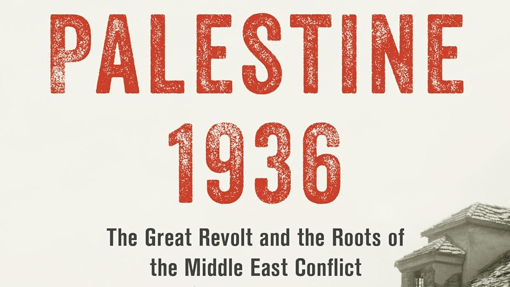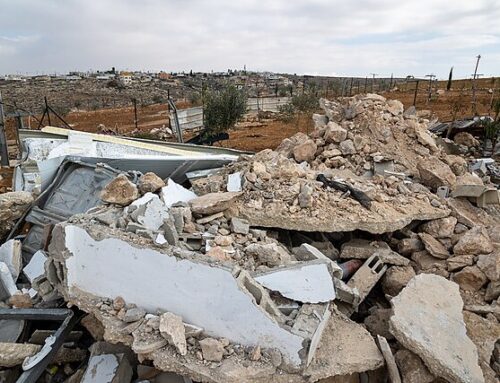Oren Kessler, Palestine 1936: The Great Revolt and the Roots of
the Middle East Conflict (Rowman and Littlefield, 2023)
Review by Peter Eisenstadt
A few weeks ago, a few weeks after it happened, I was talking with my friend Ayala Emmett, whose novel, After the Disappearance, I reviewed in the last issue of Israel Horizons. She told me the very sad story of her maternal grandmother. Ayala was born in Palestine in 1935, and in the late 1930s her parents were living on Kibbutz K’far Yavetz. Her grandmother came to Palestine from Poland. Almost every night during her stay, the kibbutz was attacked by Palestinians during the Great Revolt. When they retreated to their safe room, her abiding memory of her grandmother was singing a Yiddish song to her to try to comfort during the fighting. But Ayala’s grandmother decided that if the point of Zionism was to create a safe haven for Jews, it was clearly failing. So she returned to Poland, and in 1941 she was murdered by the Nazis. I doubt she was the only European Jew in the Yishuv during the years of the Great Revolt, the Palestinian Revolt of 1936-39, who thought that life in Europe, despite the growing threat of Hitler, was a safer place for Jews than Palestine. As the events of October 7th demonstrated, Israel is still not a safe place for Israelis. As its aftermath has again demonstrated, Palestine is not a safe place for Palestinians.
Zionism is in many ways a typical example of late 19th century and early 20th century European nationalisms, with their characteristic strengths and weaknesses. Zionists saw their movement as strengthening and enhancing an ethnicity (Jewish, in this case) both politically and culturally, rediscovering/inventing a heritage (the Hebrew language), and an opposition to the “assimilation” of group members to a dominant culture (which in this case meant an opposition to the entire culture and structure of Jewish life in Galut.) But there were several factors unique to Zionism, most obviously that Jews, unlike almost every other national movement, did not really have a specific geographic area, dominated by their ethnicity, that could be considered their obvious “homeland.” But another distinguishing feature of Zionism was that it, perhaps more than any other ethnic nationalism, regarded the physical safety of its members as a paramount concern. Jewish nationalism always confronted the reality that Jews were not merely ethnically and religiously marginalized but were the targets of a widespread and ancient prejudice, and that Jew-hatred always had the potential to become murderous and was becoming more so. Zionists thought they could combat antisemitism in two ways; by creating a haven for the Jews, and by imbuing Jews, wherever they lived, with a new measure of toughness and courage, creating a new Jewish psychology.
Herzl’s ears rang, probably only metaphorically, with shouts of “Death to the Jews” when he was writing Der Judenstaat. By the 1930s the calls for the mass murder of Jews could no longer be dismissed as mere rhetorical excess. As Vladimir Jabotinsky, head of the Revisionist Zionist movement, testified before the British Peel Commission in 1937: “The phenomena called Zionism may include all kinds of dreams—a ‘model community,’ Hebrew culture, perhaps even a second edition of the Bible, but all this wonderful longing for toys of velvet and silver is nothing in comparison with the tangible momentum of irresistible distress and need by which we are propelled.”
But as Oren Kessler shows in Palestine 1936, his new history of the Great Revolt, these were the very years, 1936 to 1939, in which the safety of Jewish lives in Palestine became more uncertain than ever. Jews, Palestinians, and the British overlords of the Palestinian Mandate waged a brutal, triangular war, marked by numerous atrocities and acts of terror. The rise of Hitler and the Great Revolt were deeply connected. The movement to Palestine of more than 60,000 German refuges after 1933 exacerbated existing tensions with Palestinian Arabs over the presence of Jews, Jewish land purchases, and new Jewish settlements in Palestine. The new migration was welcomed by Jews and feared by Palestinians as a likely harbinger of the millions of additional Jews from Europe that Zionist leaders hoped and promised and hoped would come to escape the threats to their safety.
Safety and Fear are perpetually warring siblings. When one advances, the other retreats. In life, whether on an individual or collective basis, there are two main strategies for diminishing fear of a potentially hostile “other.” The first is developing trust. The second is domination. When trust works, and it is usually a long, complex, and often painful process, it can be tremendously rewarding and fulfilling. But the problem with trust is it always involves giving the other freedom of action, and you never quite know how much you can trust a former enemy. The problem of domination is that however much you subdue your enemy, if you don’t eliminate them entirely, they will forever study you, unsentimentally, probing for gaps and chinks in your defenses, waiting for the right moment to strike back. The dominator can never entirely banish their fear of the dominated. Over the long course of the Israel-Palestine controversy, both negotiation and domination have been used, by both sides, to try to purchase the simulacrum of safety. Neither tactic has really worked.
Oren Kessler claims that his is the first general interest account of the Great Revolt, and that both Israeli and Palestinian historiography have their own reasons for downplaying its significance. I am sure he is bibliographically correct, but I don’t think the revolt is quite as forgotten as he claims, especially by Palestinians. Hamas’s military wing, the Qassam Brigades, the primary perpetrators of the October 7thmassacre, is named after Izz-ad Din al-Qassam, a Palestinian military leader killed in the early phases of the Revolt. The Revolt was the last, and the best, chance for Palestinians and local Arabs to derail the Zionists. If the Revolt had been more successful, it is easy to imagine how Palestine’s British suzerains could have washed their hands of the Zionist enterprise sooner than they eventually did. But this is not what happened.
Kessler is a journalist, not a historian, and his book breaks no new ground. The book is well-researched and well-written, and provides a useful review of main events of the period. Its basic argument is that Revolt established the “roots of the Middle East Conflict” and set the basic parameters for its future developments. Much of its contents are familiar—the elevation of tit for tat violence into something more organized, the real birth of the Haganah, the gun and Bible-toting legend of Orde Wingate, the Koran and gun-toting anti-legend of the Grand Mufti; Jewish organization, Palestinian disorganization, the Peel Commission, the White Paper, the end of the Great Revolt in 1939 as prelude to greater tragedies.
The final toll of the Great Revolt was brutal, especially for the Palestinians. The three years of fighting saw about 500 Jews killed and some 1,000 wounded. British troops and police suffered about 250 fatalities. For the Palestinians, there were between 5,000 and 8,000 Arabs killed, a goodly number of those the victims of inter-Palestinian strife, along with at least 20,000 serious injuries. I thought that Kessler somewhat underplayed the extent and viciousness of the British military actions against the Palestinians, with many villages reduced to rubble due to bombardment from the air. The Great Revolt was a prelude to military tactics the British army and the RAF would carry out during World War II. Future Field-Marshal Bernard Montgomery, who commanded the most brutal phase of the British campaign, has what amounts to a passing mention. Arthur “Bomber” Harris in unmentioned. For those wanting a grittier account of the Great Revolt, Caroline Elkins’s Legacy of Violence is recommended. For the Jews, the revolt was both a forced alliance with the British against the Palestinians and a declaration of independence against the British or any other superintending colonial power. This became clearer, when, in May 1939, the British government issued its White Paper, curtailing Jewish migration, and the beginning of British efforts to pass the perpetual hot potato of Palestinian politics to a plausible successor. The roots of Ben-Gurion’s famous chiasmus, “we will fight the war against Hitler as if there was no White Paper, and fight the White Paper as if there was no war against Hitler,” can be found in the years of the Great Revolt.
The Peel Commission report on July 1937 opened with “An irrepressible conflict has arisen between the two national communities within the narrow confines of one small country.” Some 85 years on, not a syllable need be changed. The conflict seems, if anything, more irrepressible now than in 1937. Kessler argues that the Great Revolt effectively hardened both sides, marginalizing more moderate voices, and quotes, with approval, the statement of the Palestinian American historian Rashid Khalidi, “by 1939 the Yishuv had achieved the demographic weight, control of strategic areas of land, and much of the weaponry and military organization that would be needed as a springboard for taking over the country in less than a decade.” It was the Peel Commission that first held that the only way forward for the Jews and Arabs in Palestine, was partition, and this was the birth of the “two-state solution.” Ben-Gurion and the mainstream Zionists grudgingly accepted partition, along with the hope that once it was achieved, it would be possible to transfer the Jews out of the Palestinian state, and, especially, transfer the Palestinians out of the Jewish state.
 Again and again, in Kessler’s book, one reads of both Palestinians and Jews who recognize the basic justness of the claims of the other side, such as Ben-Gurion for the Jews, and Musa Alami for the Palestinians. (Alami, who negotiated with Ben-Gurion in the 1930s, and spent his last years in Israel-occupied Jericho on the West Bank, is one of Kessler’s main characters, and his account of him, and of the Palestinian historian, George Antonius, author of The Arab Awakening, provide some of the most interesting parts of his book.) But this became less a means of mutual understanding than of mutual suspicion, a feeling that nothing will shake the other side’s sense of their own legitimacy, and that the collision between two just and irreconcilable causes can only be resolved by force.
Again and again, in Kessler’s book, one reads of both Palestinians and Jews who recognize the basic justness of the claims of the other side, such as Ben-Gurion for the Jews, and Musa Alami for the Palestinians. (Alami, who negotiated with Ben-Gurion in the 1930s, and spent his last years in Israel-occupied Jericho on the West Bank, is one of Kessler’s main characters, and his account of him, and of the Palestinian historian, George Antonius, author of The Arab Awakening, provide some of the most interesting parts of his book.) But this became less a means of mutual understanding than of mutual suspicion, a feeling that nothing will shake the other side’s sense of their own legitimacy, and that the collision between two just and irreconcilable causes can only be resolved by force.
The great African American religious thinker, Howard Thurman, whom I often write about, discussed growing up in Jim Crow Florida in the early years of the 20th century. “When I was a boy, it never occurred to me to regard white persons as falling within the scope of the magnetic field of my morality. White people were not read out of the human race—they simply didn’t belong to it in the first place. Behavior to them was amoral. They were a world apart, in another universe of discourse. To lie to them or to deceive them had no moral relevancy; no category of guilt was involved in my behavior.” There was, of course, a great asymmetry of power between whites and Blacks, but both groups operated from the same lack of moral concern for the other. To the extent interaction was unavoidable, it passed with the least possible amount of empathy or insight. There were exceptions, of benign or even friendly relationships, but they proved nothing. They were mere anomalies. For the most part, that is how Jews and Palestinians have interacted since the Great Revolt, with a deep and steely understanding of the other that is reserved for one’s intimate enemies, outside of the respective “magnetic fields” of their morality. This spirit animated Vladimir Jabotinsky’s famous essay, eerily prescient and chilling, “The Iron Wall,” which, as Kessler argues, became one of the bases of Zionism’s understanding of the Palestinians, Revisionist and Labor Zionist alike. As it happens, in November 2023 the essay celebrated its 100th anniversary since its initial publication in a Russian-language Zionist journal. In it, Jabotinsky argues that the native Palestinian Arabs will never accept a permanent Jewish presence in Palestine, and the various paternalistic ameliorations offered by mainstream Zionists in the hope that economic cooperation could blunt Arab opposition to a growing Jewish presence were but mere wishful thinking. Only if Zionists demonstrate enough military force could they gain the respect, and grudging consent to their presence by the Palestinians.
But after October 7th, Israeli Jews, and Jews everywhere, for the first time in many decades, feel unsafe. Many on the Jewish left have concluded that erstwhile allies might not quite be antisemites, but they don’t seem to like Jews very much. As for Israel, it certainly has the right, indeed the obligation, to defend its residents against the savagery of Hamas. However, the strategy of the government seems to be trying to restore the feeling of safety by battering Gaza to rubble. Dominating another people always seems like the most foolproof way of feeling safe, but it always becomes the safety of fools. You will never be able to achieve safety by trying to take away another’s people’s safety. It has not worked in the hundred years since the publication of “The Iron Wall,” and during this Hundred Year’s War, Israel has been victorious in all the major battles but never wins the war.
How does Palestine 1936 speak to us, after October 7th? More broadly, how should we read the history of Israel and Palestine after October 7th? Some have argued that the only way to move forward is for everyone to forget about their histories, which both Jews and Palestinians wield as weapons, and turn their narratives and grievances into plowshares and pruning hooks, and as blank slates embrace the new day. I sympathize with the sentiment, but I can’t agree, lest I be drummed out of the historians’ guild. On the other hand, the point of too many histories on the subject has been to convince people that, as Avishai Margalit said in the New York Times recently, “there is a sense that if you think you have a solution, it means that you don’t understand the problem and you are naïve.” But this also makes history irrelevant, since, by this standard, whether or not we study the past, we are condemned to repeat it, so why bother? I can’t accept that either. What history can do at its best is to let us imaginatively connect to the political and emotional realities of times past. What we have in common with the Jews and Palestinians in Palestine 1936, like Ayala’s grandmother, is that all of us, whether living in our respective homelands or in the extensive Jewish or Palestinian diasporas, have been plunged into an era of radical unsafety and uncertainty. And as in the late 1930s, we stand at a frightening, uncomfortable, and bewildering historical crossroads, uncertain of our path forward. Perhaps we don’t need history to remind us that “from the river to the sea” both peoples can only really be free if they learn to feel safe in the presence of the other.
No one knows how, or when, or if this will happen, but if there are lessons to be learned from history, Oren Kessler’s fine book returns us to a time that in many ways was not all that different from our own. The years of the Great Revolt provide us with a blurry mirror in which, perhaps, we can see ourselves with more clarity.
___

Peter Eisenstadt is a member of the board of Partners for Progressive Israel and the author of Against the Hounds of Hell: A Biography of Howard Thurman (University of Virginia, 2021).






Leave A Comment